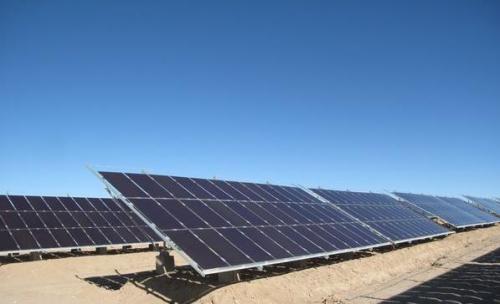 Yi Enfu said that China's PV market inflows into too many emerging manufacturers in 2011. It is only an important part of the PV industry's production chain (silicon rods, wafers, cells, and components). Its number of manufacturers has surged from 807 to 901 homes.
Yi Enfu said that China's PV market inflows into too many emerging manufacturers in 2011. It is only an important part of the PV industry's production chain (silicon rods, wafers, cells, and components). Its number of manufacturers has surged from 807 to 901 homes. In order to achieve profitability and maintain production, the factories had to fight a severe price war. In December 2011, the average price of crystalline silicon components sold by domestic manufacturers was €0.68/W (¥5.84). By the same period in 2012, the price had dropped to €0.46/W (¥3.72).
The crisis of thin film components may be even worse. In December 2011, the average selling price of thin-film modules in China was €0.63/W (¥5.41). By the same period in 2012, the price dropped to €0.57/W(¥4.61). Most large customers purchase thin-film modules because of its price advantage over previous crystalline silicon modules. However, due to the inability to timely reduce cost, thin-film modules are now far more expensive than crystalline silicon modules. The film market is facing embarrassment of stagnation.
A large number of manufacturers are going bankrupt as profits disappear. In 2012, the number of producers in the photovoltaic industry's production chain dropped sharply from 901 to 704, among which module makers have dropped sharply from 624 to 454. In addition, there are 180 in-chain producers entering a temporary shutdown.
Yi Enfu also pointed out that small-scale manufacturers in China's photovoltaic industry generally operate in the same way that orders are profitable when they are placed in order. Production activities are not carried out during orders. In the face of a bubble-threatening and sparsely-ordered market, small-scale manufacturers usually have to choose to stop production at their plants and dismiss factory employees to reduce cost. Although this fast-forward and fast-moving business model contributed to the formation of a market bubble, its subsequent exit response to the unprofitable market also helped the market recover.
PufangTech`s VHF radio modems operate in 136~174MHz and 220~240MHz frequency band. The VHF Radio Modem has an air data rates of 19200bps in 25kHz channel spacing and 9600bps in 12.5kHz.
Suitable to apply in data collecting, and VHF radio modems have been used to transmit voice and radio data since the middle of last century. This is one of the most efficient ways to communicate over miles away. A wider coverage is a different advantage belongs to VHF frequency from the others. VHF has 30 to 50 per cent larger range than UHF Radio Modem with the same carrier power.
VHF Radio Modem,VHF Modem,VHF Data Radio Modem,VHF Data Radio
Shenzhen PuFang Technology Co., Ltd. , https://www.hytelus.com